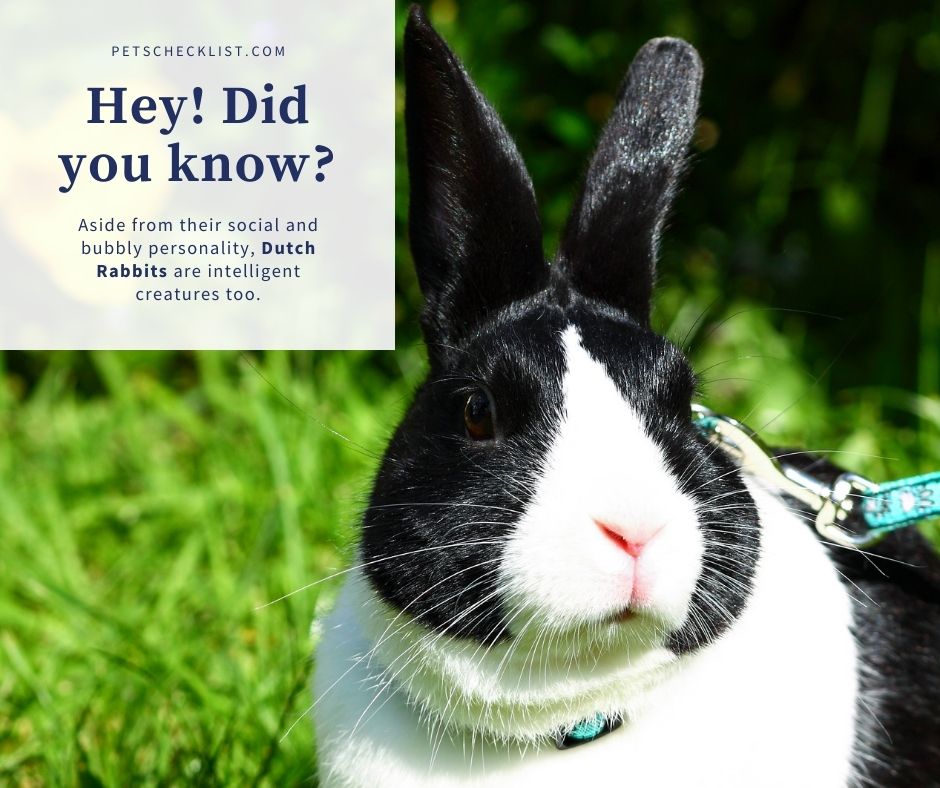A Dutch Rabbit is a popular breed of rabbit. They are best known for their distinctive appearance that makes them unique.
They are considered one of the oldest breeds of domesticated rabbits as they are originated from Holland and discovered around 1850 as Hollander Rabbit.
In 1864, these rabbits became popular in England. These rabbits continue to be valuable pets around the world up to this day.
Table of Contents
Quick Facts
| Origin | England |
| Scientific name | Oryctolagus cuniculus |
| Lifespan | 5 to 8 years |
| Higher classification | European rabbit |
| Rank | Breed |
| Friendliness | Yes, Sociable |
| Shedding | Seasonal |
| Vertical Jump | 2 Feet |
| Hypoallergenic | No |
Getting A Dutch Rabbit As A Pet

Because of its fancy appearance, many people start to invest their time to adopt a Dutch Rabbit. They believe that these rabbits are precisely exceptional.
Their round and balance body makes them an ideal pet for everyone. Dutch Rabbit is the only breed with a white blaze on the nose, a white saddle on the back, and a white collar around the neck. They are indeed unforgettable.
Lifespan
The average lifespan of these Dutch rabbits is around 5 to 8 years. They can live longer depending on the quality of food and the environment. A wild Dutch rabbit tends to live shorter than a domesticated Dutch rabbit.
It is because they carry more possibilities of getting infected by different diseases from other wild animals. Dutch rabbits at home can live for more than ten years if receiving proper nourishment, love, and affection from their owner.
Since Dutch rabbits are lightweight, people like to bring them home and treat them as their own. Providing them essential health care can extend their life. However, it is still possible for Dutch rabbits to live a short life.
They may be having genetic issues that they have been carrying since birth. To prevent this situation and while they are still juveniles, consult a vet to know their overall health status.
If they found something wrong, do not hesitate to leave your pet in the hands of the vet to prevent severity before it is too late.
Sizes
Typically, Dutch rabbits are small to medium size rabbit breeds. They have a shoulder height of 7.5″-9″ (19-22.9 cm), body length between 11″-14″ (28-35.6 cm), and overall weight in the range of 4-5.5 lbs (1.8-2.5 kg).
These small rabbits have distinctive markings that make them easy to recognize since they are just like the size of Netherland dwarf rabbits.
Dutch rabbits are small because of a dominant gene. If one of their parents carries this gene, a tiny rabbit could be born. It is a typical size for rabbits.
Average Cost
Dutch rabbits are available in local pet stores, animal rescues, and other organization that aims to provide security to the animals with the rightful owners.
Typically, rabbits in a pet shop cost $20-$40 and $5-$20 for a rabbit from a rescue. Since Dutch rabbits have bred, expect it to be more expensive than the typical pet rabbits. It cost around USD 70-100. The price may vary depending on the shop.
Some of the rescue organizations across Canada only offer Dutch Rabbit at half price or low adoption fees even though it has a breed. It is not a surprise that they are expensive, but others only aim to give the Dutch rabbits to the deserving.
Someone willingly to provide care and attention to these adorable creatures. So, they sell it at a very budget-friendly price. You are lucky if you found an organization that has pure intentions for their animals.
Temperament
Dutch Rabbits are out-going and social creatures. They love to spend most of their time interacting with their owner. Because of their gentle nature, they are child-friendly when handled well and if they are in the mood for socializing. If kept in isolation, they become stressed and bored, especially if they have no companion rabbit at all.
Dutch Bunnies are the ideal pet for first-timers. They are low maintenance until you introduce essential items to keep them entertained, healthy and happy.
They will get used to it, and you have to provide for their needs and wants, or else, they would feel depressed.
Since they are sociable rabbits, they are also compatible with couples and seniors. As long as people can meet their needs, these rabbits are for everyone. Their performance in training depends on the approach.
But you have to accept that there are human activities that cannot reach their capabilities. If that happened, do not punish them as they tend to change their mood quickly and show no interest in training. Be patient and try to understand. Whenever they do well, give their favorite treats as a reward.
Dutch bunnies are not as obedient as you would like them to be. If you yell and become aggressive in front of them, they will refuse to participate in the next training. As an owner, you have to approach them adequately and show an extra effort to train them. Take it one at a time. You will be surprised one day that they can now learn tricks.
Weight
Dutch rabbits are the smallest rabbit breeds. Sometimes mistakenly recognized as dwarf rabbits, but they are just fun-sized. When they turned six months, they rapidly grow. They get so big that you can’t handle these furry pets anymore.
According to the American Dutch Rabbit Club, when they reach the phase of maturity, they weigh about 1.63 kgs. They typically weigh lighter during the first five months. Their love for eating tomatoes, vegetables and hays is the reason behind their fast growth and development.
Their size still depends on their diet and exercise. It can affect the size of these Dutch rabbits from their average size. Netherlands dwarf rabbit is small because the dwarf gene is dominant in them. People get confused between Dutch Bunnies and Netherland dwarf rabbits.
However, Netherland dwarf bunnies are more miniature than Dutch Rabbits. They appear to be fun-sized bunnies and only weigh around 1.13kgs.
Color
You can identify a Dutch rabbit by looking at their coats. Despite having several types, their marking is almost the same. Their ears and rumps are dark and white from the top of their shoulders down to their belly. They have a wedge of white fur running up the front of the face. It was called the Blaze. Dutch rabbits have white legs that are very common among other bunnies.
A Gray Dutch Rabbit has mixed-color fur like medium tan, slate blue, charcoal brown, and chocolate, and they have dark brown eyes. A Chinchilla Dutch Rabbit has an Agouti color. Their fur mixed with white and gray.
The Blue Dutch Rabbit eyes are blue-gray, and the fur color is medium dark blue, and it is glossy. A Black Dutch Rabbit has slate black and pure white fur with dark brown eyes. The Steel Dutch rabbit has an almost black body with cream coloration on some of the hair tips. They also have dark brown eyes. A Tortoise Dutch rabbit is a bright orange or cream-colored coat.
Characteristics
Rabbits are naturally charming. Everyone that gets to see a rabbit would probably be in love with how adorable they are in their little ways.
They are indeed irresistible. More and more people are getting interested in bringing home a rabbit—the smaller, the more adorable. Having a Dutch Rabbit is fun.
They are the companions that you would love to interact with every day. They are like a bouncing ball roaming around the house full of positivity and energy.
The Dutch Rabbit is the easiest breed to identify because of its color pattern. They have distinctive white markings, a white blast on the nose, and a white-collar on the back.
They are smaller than typical bunnies. But do not get me wrong, they are not dwarf rabbits. Their furs have an average length with a soft under-layer covered by guard hairs. Brushing their coat will quickly go back to its normal position.
Dutch Rabbit has a compact and well-rounded body. They have rounded heads, and their ears are short, stocky, and well-furred that stand erect. Their back legs are longer than the front legs. It makes the back legs more functional, and the fur is soft and short.
Do Dutch Rabbits Like To Be Held?
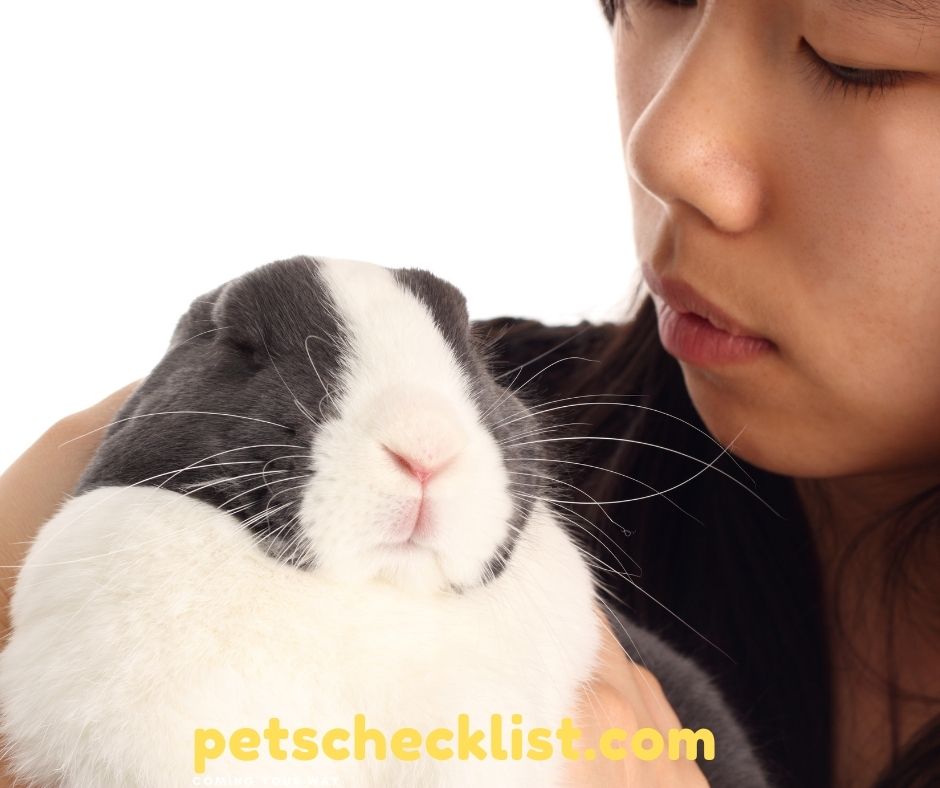
Watching your pet Dutch Rabbit playing gives you the kind of entertainment you want after a long tiring day. Because of their charm, you cannot help but to hold and squeeze your pet. But did you know that not all Dutch Bunnies like staying in your lap? There are times when your pet prefers to be alone and not to squeeze by people the whole time. They sometimes do not like a human touch. Therefore, you should be extra careful when you want to pick up your pet rabbit. Observe their mood first.
Dutch rabbits are intelligent and can respond well during training. With proper training, your Dutch pet rabbit may enjoy staying in your lap. If you start their training young, they will eventually learn that they belong to you and nothing to worry about their safety.
Make them feel safe and secured. However, if you have kids at home, you must teach them not to be aggressive towards the bunnies. If rabbits are triggered, they tend to scratch or bite you.
If you handle your pet rabbit the wrong way, and they felt uncomfortable, it will be dangerous for your pet. Their bones are still delicate. It can easily get fractured due to rough handling. Treat your Dutch pet rabbit the way they deserve, and you must remember that children under the age of 10 need supervision with these furry pets at all times.
Are Dutch Rabbits Good Pets?
If you want to have a pet companion with a kind disposition, Dutch Rabbit is for you. They are known for their gentle nature. Because of that, these pets are child-friendly and well-suited as family pets. Everyone will surely enjoy the entertainment they give. Like other pet animals, they show love and affection through their little gestures, and you will probably feel it. They are easy to love and gives joy to everyone.
Dutch Rabbit is an ideal pet. However, you need to ensure that children know how to handle the bunnies well. Even though they are social and friendly, some do not enjoy being held for too long. They tend to panic if they were pick up by someone who does not know how to handle them properly. If accidentally dropped, it can cause damage to their bones.
If you want to set them free without destroying anything from the garden, place them outside and provide a large outdoor maze for your Dutch rabbit. In this way, family members and even visitors can interact with your rabbit without needing to pick them up. Still, some of the owners allow their rabbits free to run inside the house. Before you consider doing that, ensure that you do not have any valuable or fragile things.
Are Dutch Rabbits Smart?
Aside from their social and bubbly personality, Dutch Rabbits are intelligent creatures. They are easy to train, and you can count on them during training. Just like dogs, they know if you are angry, happy, or sad. They are an underrated but interesting pet since not everyone knows about these Dutch Bunnies. If you have these rabbits, expect it to be more exciting than owning a typical dog. They can cope up well in their environment, and they can familiarize things without teaching them. Yes, they are observant too.
During training sessions, they thrive on regular interplay with humans. They prefer active nature in training than to be kept inside the house doing nothing. As they grow up, their ability to think improves because of their environment. So, expect a responsive Dutch Bunnies.
Can Dutch Rabbits Live Alone?
Living in captivity without any companion is a big NO for Dutch Rabbits. If you are a busy person and spend most of your time outside, you must give your rabbit another companion. These furry pets are better with pair.
They are generally much happier with groups than solo. If they are alone, they can live in depression. It affects their mental health because it is disturbing and destructive to their typical happy nature.
Like humans, rabbits as well cannot live their life to the fullest. They need someone who can eat, groom, and play with them since they are naturally active little creatures. Seeing them in a squad makes them extra adorable. Since they are intelligent, they can read signals from one another and understand each behavior.
Their social behaviors are useless if they are all alone. They have no one to communicate with and share their food. For some, it is no big deal, but to Dutch bunnies, having a companion is everything. Companionship is necessary and not an option. You need to understand their needs to survive. You do not want to see your rabbit suffering. Get them a companion and bring them home for your Dutch rabbit.
How Many Babies Can A Dutch Rabbit Have?
Rabbits have a high reproductive rate than other animals. Within a few months of birth, they become sexually matured and encounter short pregnancies. They produce unique and large litters, and after giving birth, they can breed again. The hesitation period lasts 31 days. The female Dutch rabbit gives birth to a litter of baby rabbits. They can have 60 weaned young per year through an intensive breeding program. It is not advisable. However, it is for commercial production purposes. The newborn bunnies are blind and hairless. During their 10th day, their eyes start to open and grow their tiny hair.
The typical litter size is 6 or 7 but can be as high as 12. The young rabbits weaned at four weeks of age. A female Dutch rabbit can have as many as 5 liters per year.
Do Dutch Bunnies Have Blue Eyes?
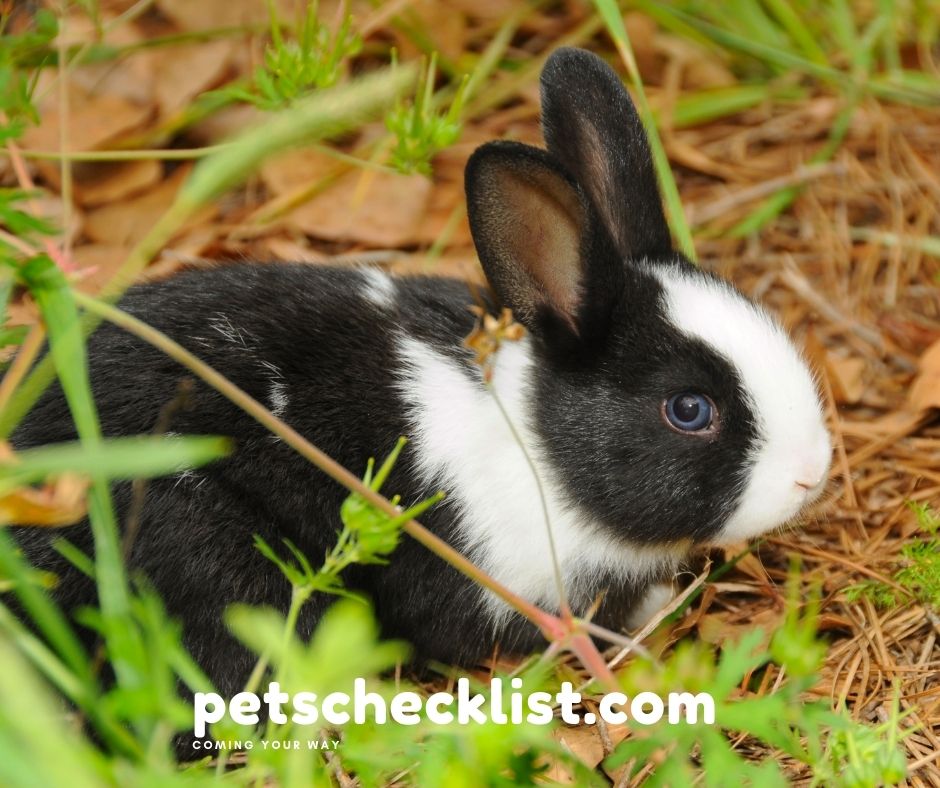
Dutch rabbits are one of the rare breeds that can have blue eyes. Rabbits with blue eyes might be more sensitive to light.
The blue color of their iris indicated the refractive index of light in the iris. The light in blue-eyed Dutch bunnies is a little absorbed to the outside environment or scatter throughout the structure. The structure of the anterior layer of the iris and the absence of melanin pigment favors the passage of short blue waves. It allows the transmission of light to wave deeper into the eye. It also grants diffusion through the reflection of intense blue light.
Do Dutch Rabbits Bite?
Your Dutch rabbit’s look can be deceiving. Yes, these furry creatures are adorable, playful, and fun individuals, but they can bite you. They may not intend to hurt you, but you cannot avoid the fact that they are mischievous. The last thing you can do is to cut their nails short and pick them up appropriately. These furry pets are sensitive, be careful while handling them as their bones are too fragile.
They can start biting you little by little, and it is not painful unless you provoked the rabbit. It may give you a bite, though it may not be painful for you. But for kids, it hurts, and they might even cry. It will all happen when you start to be aggressive towards them and if they do not like what you are doing around them. If you know you are doing well in handling them, then do not worry. Your Dutch rabbit will behave just how you want them to be, if they don’t, try giving them fresh dandelions.
Final Thoughts
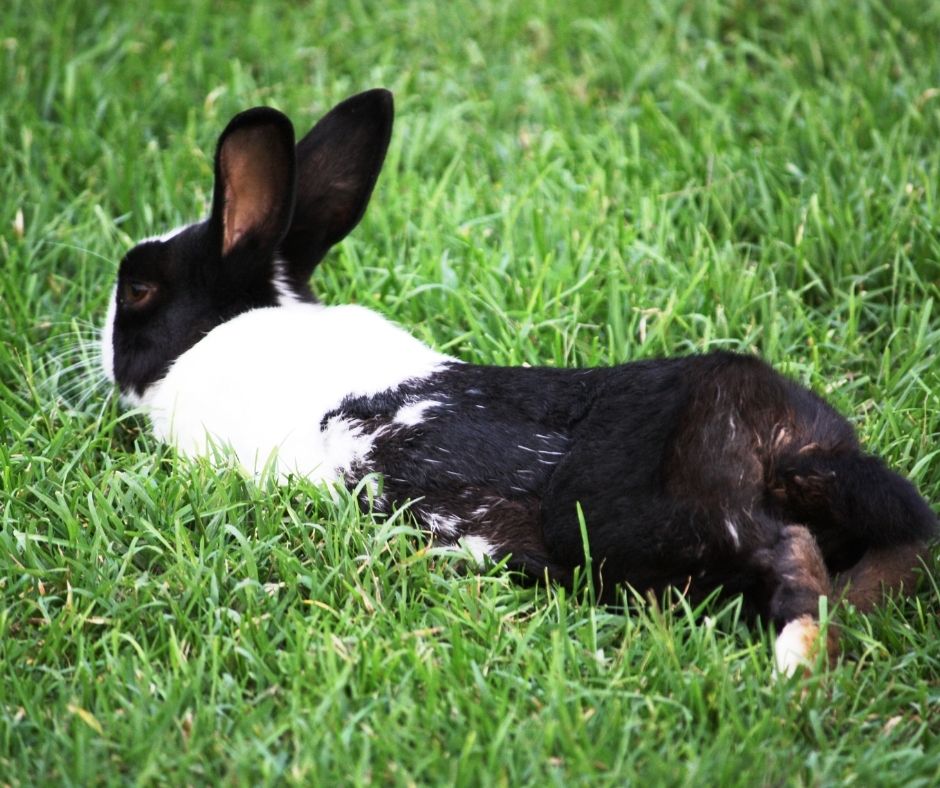
If you are considering having a Dutch rabbit at home, then probably now is the right time for you. With basic knowledge about these rabbits, you can achieve to provide their wants for a healthy and happy lifestyle. It is time for you to have an easygoing, friendly, and intelligent companion that can be your source of happiness.
Whenever you interact with the rabbit, you should try to earn their trust by being kind around them as they are known for their gentle nature. Give them time and space to settle in their new home before introducing them to the whole family and your close friends. Be patient with your rabbit, and you will be surprised one day that they can bond along with everybody.
Observe their likes and dislikes and learn to allow them to approach you first on their terms. Having a dutch rabbit is like taking care of a child. You have to take full responsibility and be responsive as possible to their needs and condition. Take them to the vet to ensure that they are doing well. If not, seek advice from the experts.
If you love our pet content, we invite you to follow us on our social media outlets for more updates!
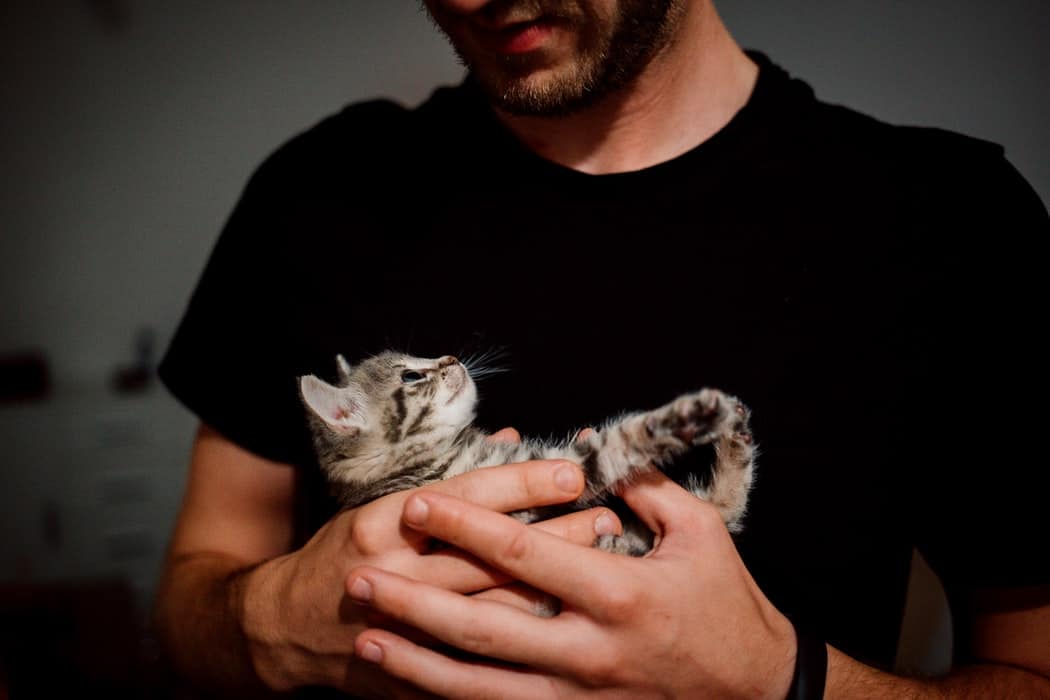
Hezekiah is a pet lover since birth, according to his parents. He started writing for the Pets Checklist in 2020. He is fond of playing with and taking pictures of different friendly animals around his neighborhood. He loves to read and write articles about pets, science, and music.

